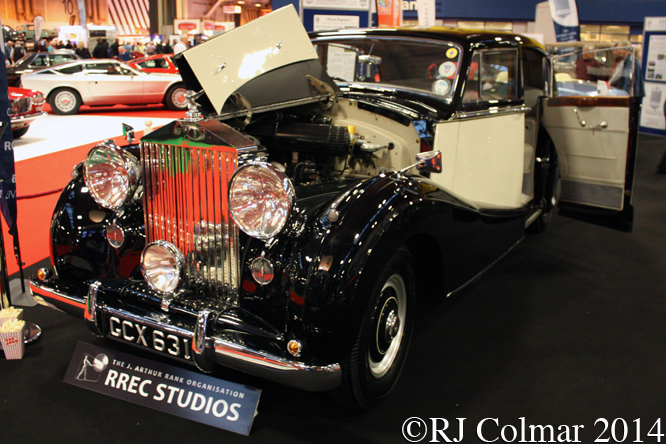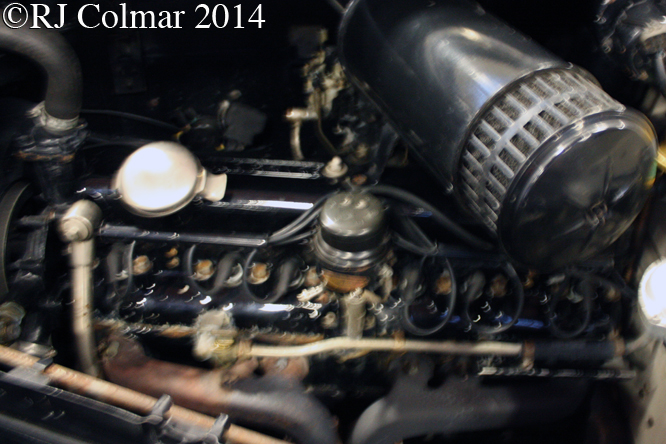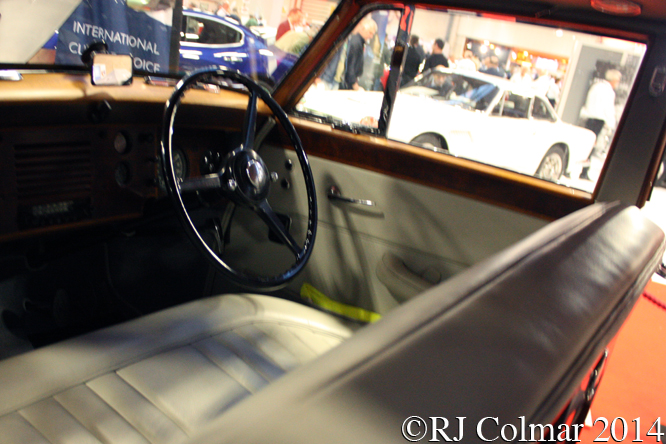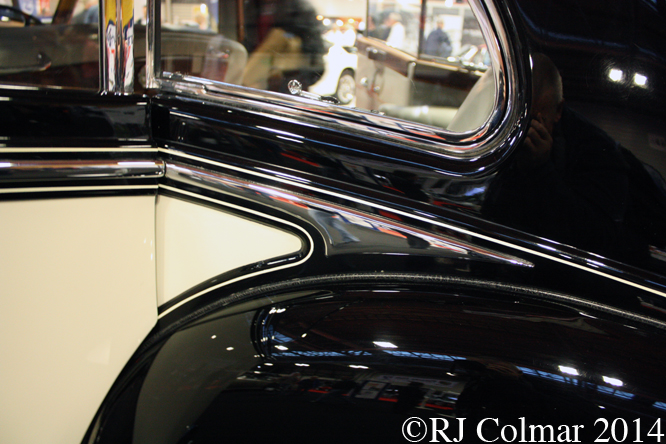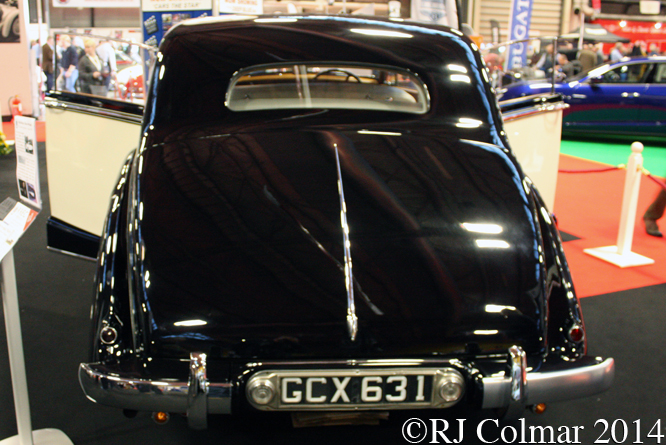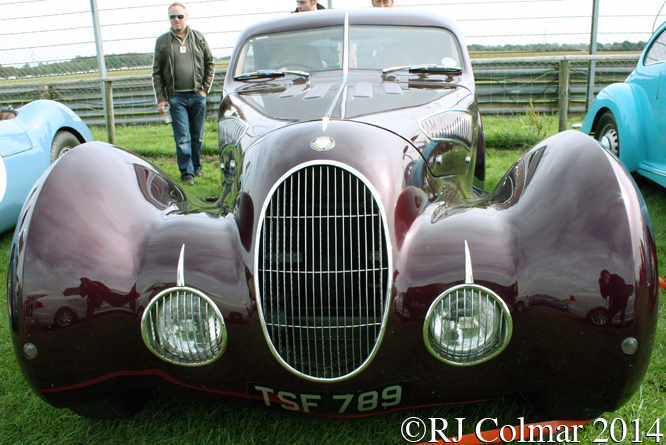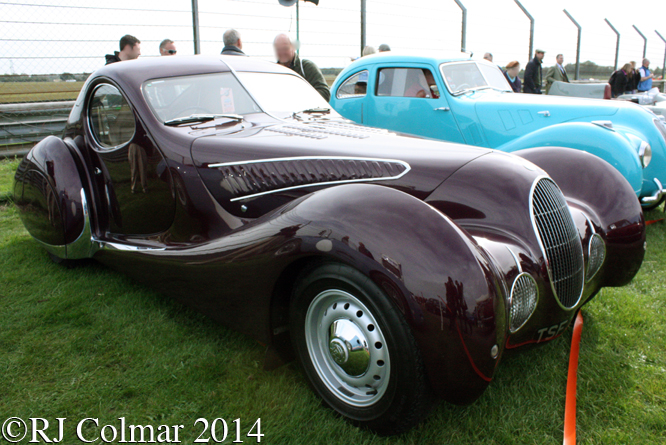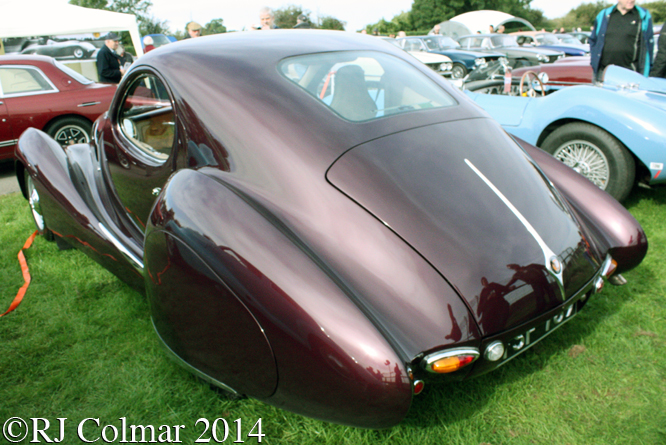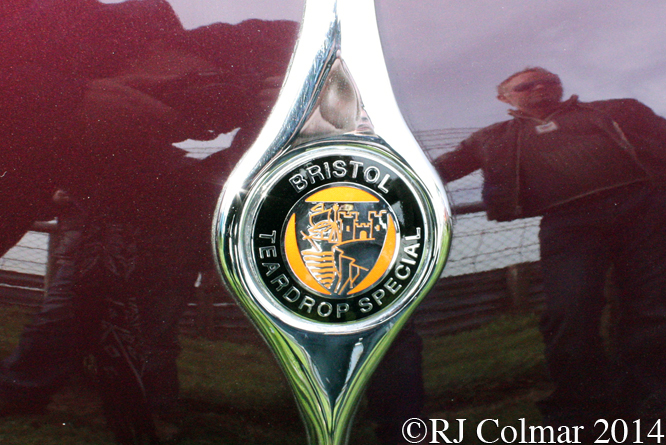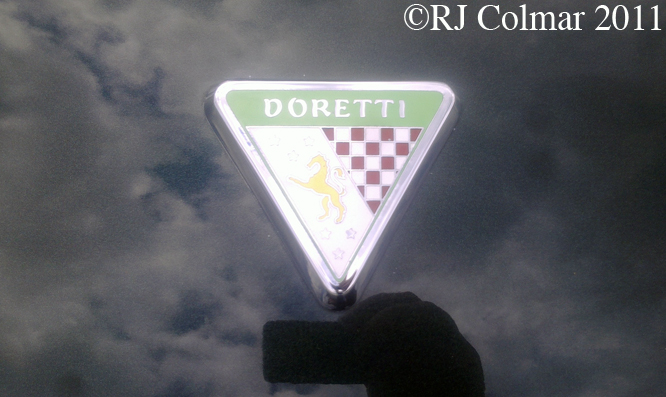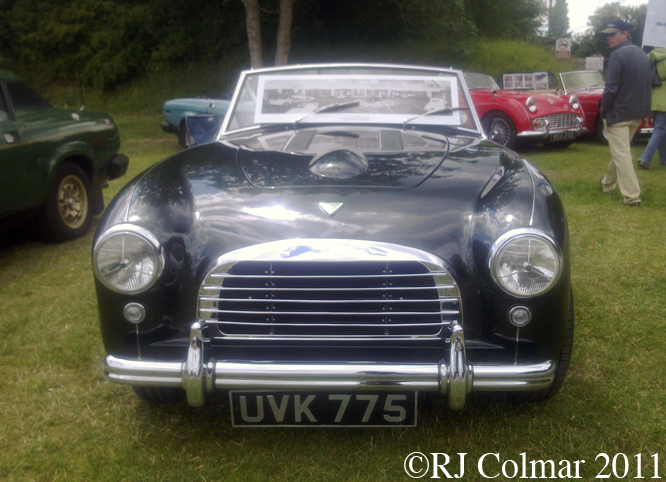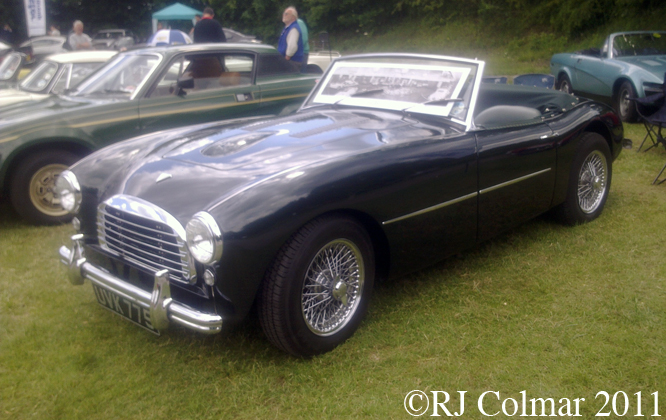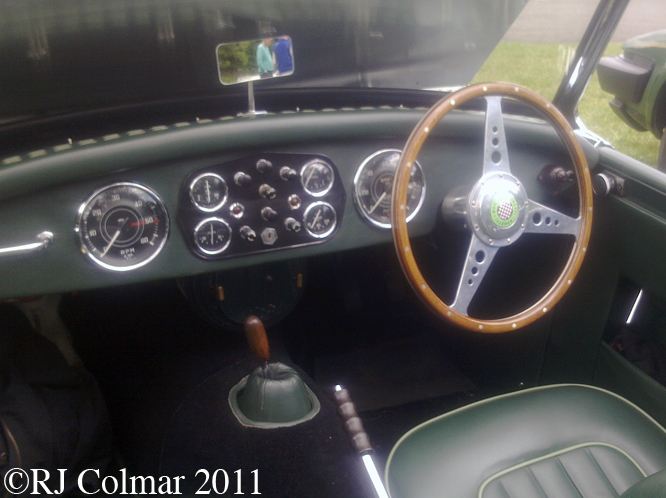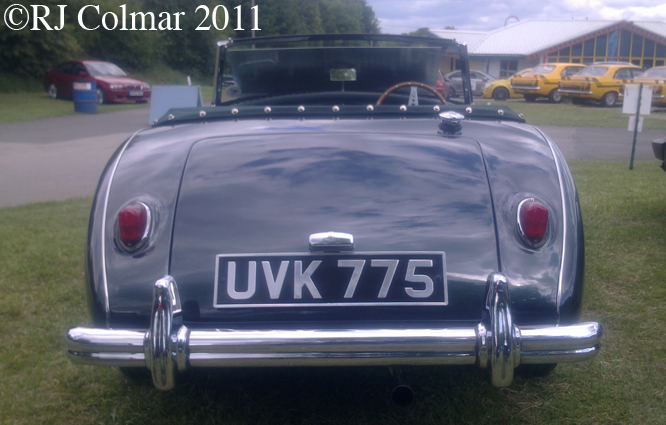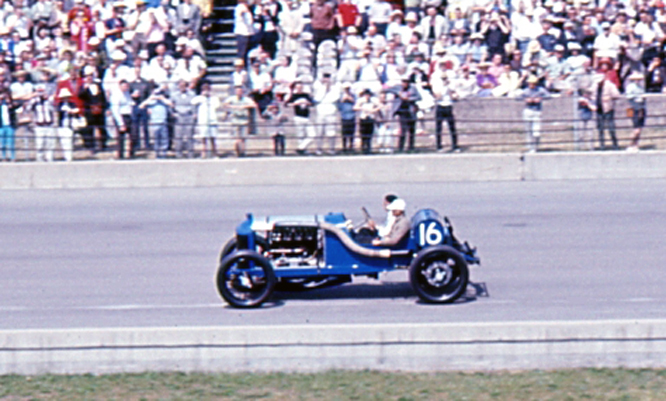In 1980 and 1981 the Leyland Commercial Vehicles sponsored Williams Grand Prix team won the World Drivers Championship (1980) with Alan Jones and two consecutive World Constructors championships with their Patrick Head designed FW07’s. During 1981 one of Austin Rover who were part of the British Leyland Group approached Patrick to help them design a new rally car to conform to the forthcoming Group B regulations that mandated 200 identical cars to be built and a further 20 evolutionary competition versions.
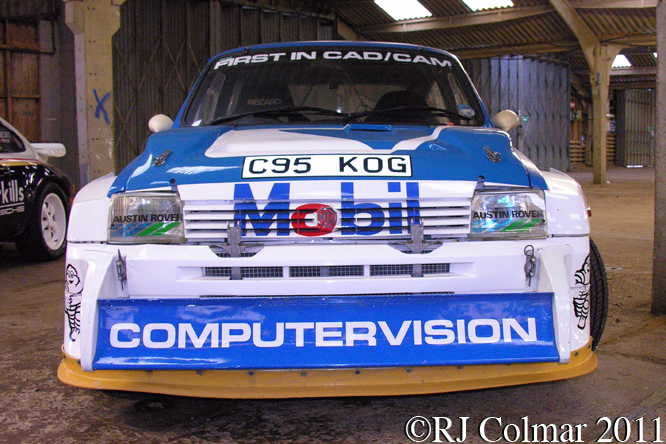
The car Austin Rover wanted to promote was the recently launched Metro and because this was a competition vehicle the MG brand was the natural version to promote. Patrick head and his team built a space frame chassis that housed the motor behind the driver and equipped the car with four wheel drive. Apart from the roof panel, windscreen, doors, front grill and lights which were MG Metro sourced every other part of the car was competition spec.

The first prototypes were seen in 1984 powered by an interim V6 version of the aluminium Rover V8 engine which produced around 250 hp. The car was subsequently tested in numerous national rally events and proved to be quick while it last.
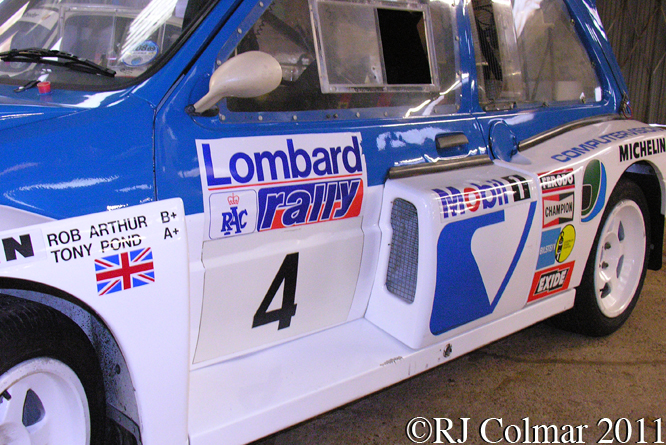
In March 1985 Tony Pond and Rod Arthur won for the first time in a 6R4 on the Gwynedd Rally in Wales.
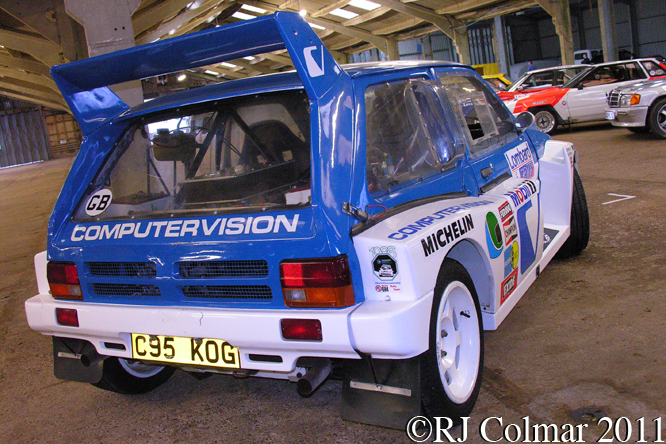
By now the car had grown wings at the front and rear and had a lengthened wheel base. The car was also now fitted with what is probably the only motor designed specifically from scratch for a rallying application namely the V64V a 3 litre / 183 cui normally aspirated V6 with four valves per cylinder and double overhead cam shafts that could be tuned to give over 400 hp.
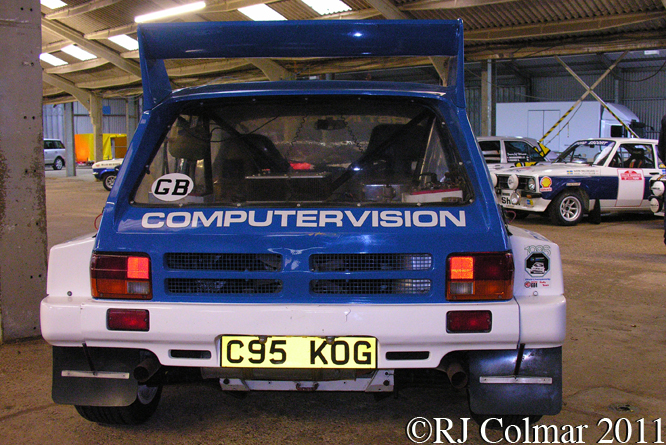
When fitted to the Metro the car could accelerate from rest to 60 mph in just 3.0 seconds an achievement compatible with contemporaneous Formula One cars. The V64V would later achieve success in Group C2 racing where it was used by Ecurie Ecosse to win the 1986 Group C2 championship and later still the V64V was fitted twin turbo chargers and fitted to the Jaguar XJ220.
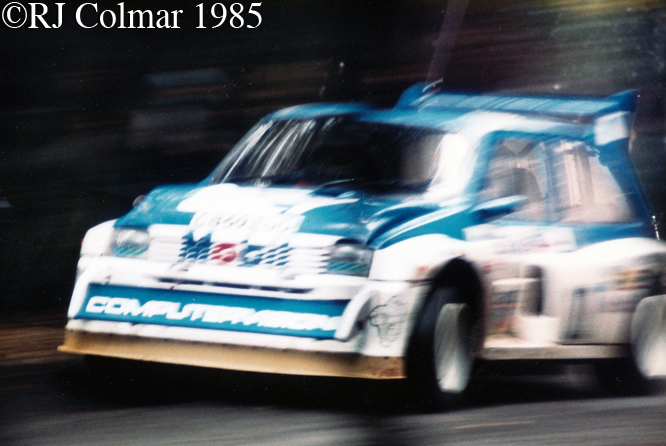
The Metro 6R4’s debut in the World Championship Rally was in the 1985 RAC Rally, which happened to start about two miles from where I was living in Nottingham that year. The #10 of Tony Pond and Rob Arthur, which is seen blasting through a forest on the opening day above, would record an excellent third place behind two Lancia Delta S4, which were also on their debut appearance.
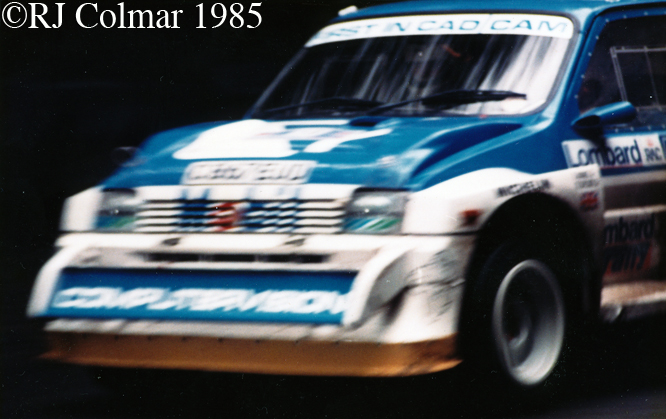
Malcom Wilson and Nigel Harris seen on the same stage above retired with engine failure after completing 23 of the 63 stages. I took these photographs in a non approved area and was pelted with stones from the gravel track as the cars passed by. With the benefit of hindsight this is not recommended at home, the following year 1985 RAC winner Henri Toivonen and co driver Sergio Cresto were killed when their Lancia Delta S4 plunged into a Corsican ravine and caught fire on impact earlier in the season a Group B car slid into a crowd on a special stage injuring 30 spectators and killing 3 more.
These two fatal events led the sports governing body the FIA to ban Group B from the end of 1986 with several teams withdrawing from the sport immediately.
My thanks to Sterling49 and Tim Murray at the Nostalgia Forum for helping to identify the drivers and co-drivers of the two cars seen on the RAC Rally.
Thanks for for joining me on the “Don’t Try This At Home” edition of “Gettin’ a li’l psycho on tyres” I hope you will join me again tomorrow. Don’t forget to come back now !
